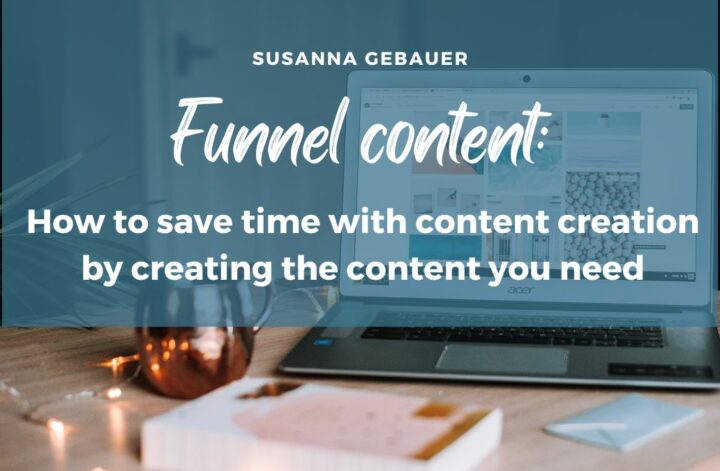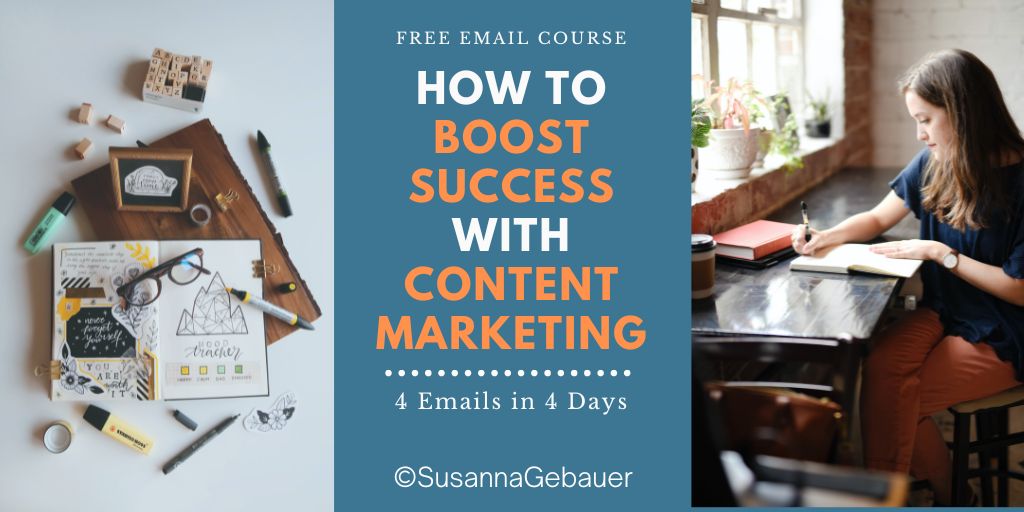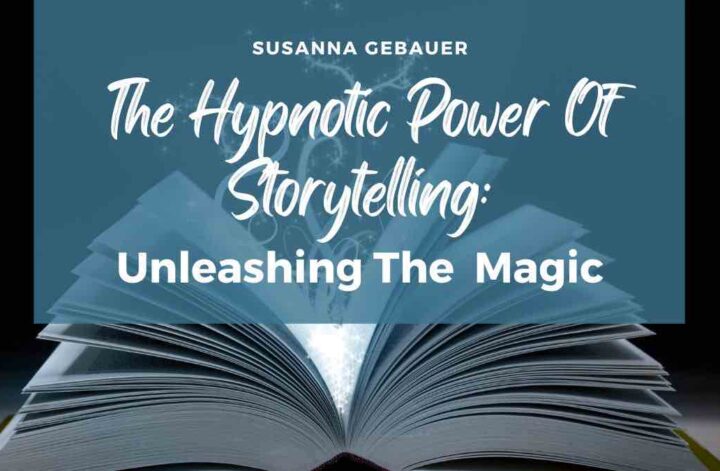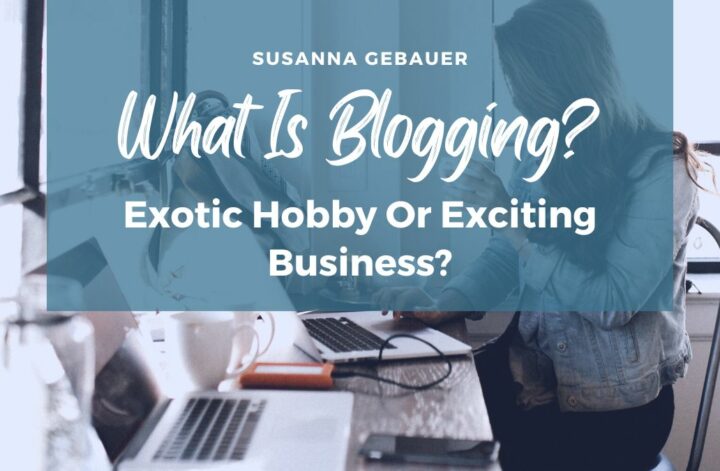Do you know why your content creation needs to focus more on creating funnel content? Content that is directly created with one stage in your marketing funnel in mind? The answer is simply that you will achieve more with less effort. Sales funnel content does not need more content but more targeted content that serves a purpose.
Let me tell you how you can achieve more with your content!
Personally, I think, funnel content also makes it easier to come up with content ideas.
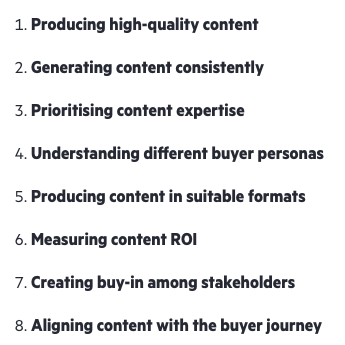
Many bloggers and content marketers complain that creating “enough” content is a challenge for them. They have the impression that they have to create more and more content and at the same time lack ideas for the content and struggle to find the time for content creation.
Screenshot from Longitude
If you, in addition, take into account the frustration that the content often does not yield the results they were looking for or were promised. It all comes down to the question of whether content marketing is even worth the effort.
The answer “you need more content” in this case does not really help.
I have been there on the hamster wheel of content creation with the frustration of not seeing results. I created one blog post after the other until I felt totally burnt out of words and had to face writer’s block.
The answer could be: Don’t just create content, create content with a goal for each piece of content in mind. Be clear about what each piece of content should achieve and which stage of the customer journey this content serves.
If you do that you will see better results from fewer pieces of content.
I wrote about content pillars and cluster content a couple of days ago. That is one way to be more targeted with your content creation and help you with content ideas. But you should also consider your marketing funnel in your content creation.
Each stage of your content funnel needs different content for maximum results. If you know the stages of your sales funnel and if you are clear about which stage of your sales funnel your piece of content should serve, you can target your content much better and will see more and better results from your content creation.
Let’s consider the sales funnel and its stages:
Maybe the term sales funnel is misleading or too narrow. You may rather want to call it your marketing funnel or content marketing funnel. Not every marketing funnel has sales as a goal. Content marketing can also aim at things like brand awareness or business process optimization.
What are sales funnels?
A sales funnel describes the customer journey from getting the attention of a potential customer to finally convert a prospect into a buying customer. Sales funnels look different for different niches, types of businesses, and whether they are online or take place in the “real” world.
At each stage of the sales funnel, you can use content to help achieve the goal of this stage to take a person from one stage of the funnel to the next – or turn them into a buying customer.
Content on each stage of a sales funnel serves a different purpose and thus should consider this purpose.
Sales funnel examples
Let’s take a look at some sales funnels before we go deeper into the content creation for the various stages of the funnel.
The Brick and Mortar Funnel
When we are out shopping, walking through a street with shops, the sales funnel looks something like this:
- The awareness stage: People walk by your store, see your store ad in a newspaper, or find your store in the online listing when searching for a shop where they can buy a product you sell.
- Walk-in: A percentage of the people getting aware of your store actually walk into the store and start looking around.
- Attention: Some of the people see the display of goods you want them to see and buy.
- Buy: A percentage of the people buys something
In this funnel, the shop owner has several opportunities to influence how passers buy react and how many of them actually buy from them. Large signs can showcase what people can expect inside the shop and make people enter. Displays with special offers can lure people into the shop. They can arrange the offers inside the shop in various ways trying to focus the attention of people on something they want to sell. Optimizing the buying process with various payment options, or people guiding the customers can make it easier to buy.
The more expensive the products are the more shop owners have to focus on building trust in their offer before people will buy.
Online shop owners can use a similar funnel – only online and the potential customers will not happen to pass by, shop owners have to find a way to catch their attention, for instance with ads or via Google search.
The Online Sales Funnel
The sales funnel for digital products usually looks slightly different but follows similar principles.
Basically, there are four stages: Awareness, Interest, Desire or Decision, and Action.
In the awareness phase, your audience finds out that you exist and what information they can get from you. This is when they first find you via Google, social media, or referral links. The content in this phase often tries to convert visitors to email subscribers because email subscribers are much easier to lure back to your content. If they don’t subscribe it is hard to get them to the next phase of the sales funnel.
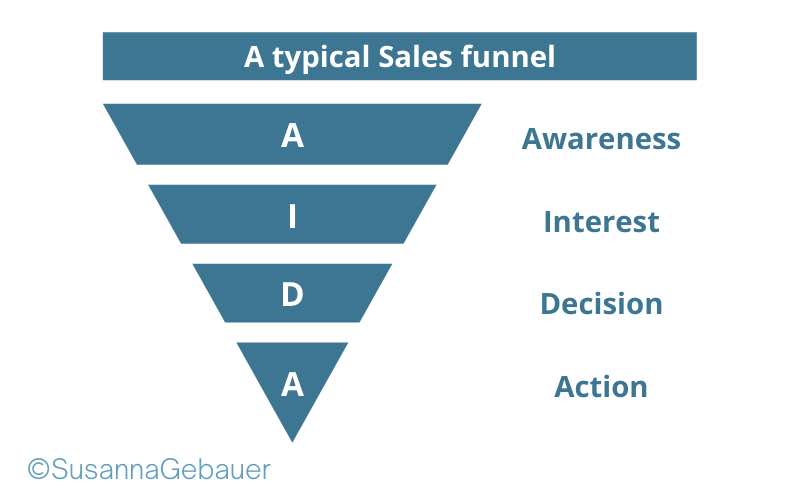
The interest phase is focused on building community and trust. Most of the time, you do that by sending emails with information that is valuable to your target audience. Another way to build community and trust is through your social media channels. You can send out posts with valuable information. But building the kind of trust you need to convert social media followers into buying customers is hard to build via social media posts – and gets harder for more expensive products.
The more influential you are on social media the easier it can be to convert customers directly on social media – that is what social media influencers are trying to achieve. The trust these influencers build is much more valuable than the sheer number of their followers.
The decision phase is about bringing your audience closer to your products. In this phase, you cater for the prospects that are (almost) ready to buy. Here you need to bring some more information about your products into the mix. you can help your prospects make a decision by using some mental triggers like scarcity.
The action phase is where you make money. But even if your customers buy from you, your job is not done. You want to turn a one-time buyer into a recurring customer, get feedback and testimonials.
The Content Marketing Funnel
The content marketing funnel as described by Content Marketing Institute is a little more complex than the standard sales funnel. They consider other content marketing goals than sales. It is based on the assumption that not every email subscriber or social media follower is a sales lead but still has value for you. The value of a follower or subscriber can also lie in aspects like sharing your content, linking to it, or even monetization through other means such as affiliate links, ads, or sponsored content.
With this, the content marketing funnel has three main stages: The acquisition phase, the research phase, and the launch phase.
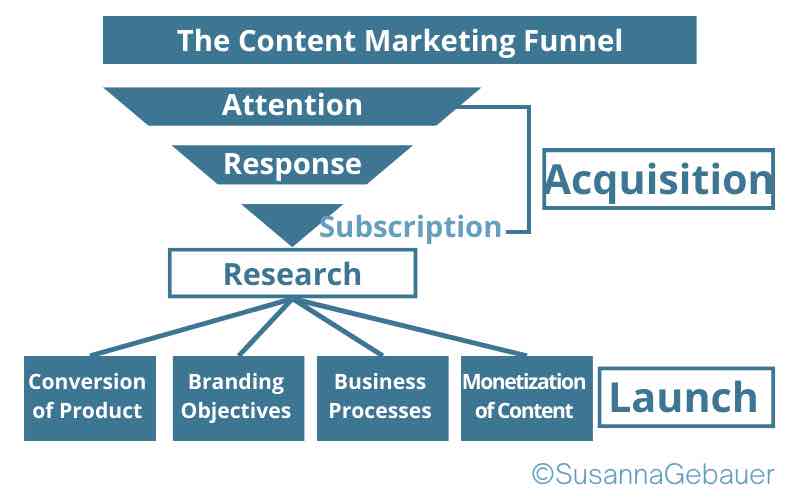
What is sales funnel content?
At each stage of the funnel you can (and should) use content.
And that’s why we need to take a look at your sales funnel before we start creating content.
Your content should always have a purpose or goal. Something you want to achieve with this piece of content. And that purpose is different for every stage of the sales funnel.
The content for the various stage of your sales or content funnel needs to consider what they are created for. In return, the content that you created with a clear purpose in mind will most of the time be much more successful in achieving that goal than content that you created without a clear purpose in mind.
Remember the four stages of a typical sales funnel? Let’s look at the kind of content you can use at each stage. The wrong content at a stage that does not fit the content will not get you anywhere.
That is what is often going wrong when people try to promote their product directly on Twitter but their audience only has a vague idea of who they are and what they do.
Your content will be much more efficient if you are clear about the stage of the sales funnel this content should serve.
The awareness phase
If people just get to know you, you will have a hard time making a sale. Going right into selling in the awareness stage is like asking someone to marry them right after the first introductions.
In this phase, you want to bring people to your website, many of them for the first time.
The content for this phase usually focuses on website traffic.
Great content for awareness are blog posts that bring in search traffic and posts that will get traffic from social media. Other content for awareness can be (info) graphics, videos, and podcasts that will attract an audience.
You want to hook some of the website visitors to you – either as social media followers or even better as email subscribers. That is why the content for awareness often is used to build your email list and aims at turning some of the website visitors into email subscribers.
Why are email subscribers great? Because it is easier to nurture people through the funnel if you are in direct (email) contact compared to social media followers or visitors from search who may or may not return to your website.
The interest phase
Content for the Interest stage are often White papers, useful resources, case studies, and webinars – but they can also be blog posts. The purpose of this content is to build authority and trust and connect to your audience.
You want to deliver a lot of value to your audience so that they start to believe that you know what you are talking about and a great person to connect to. You also want to build a more “personal” connection. Content that inspires comments and engagement like webinars works well for this.
The content in the interest stage should be around topics that are close to the scope of your product.
Do you need an example? While I write about Instagram once in a while, I don’t offer an Instagram course. If I want to nurture my audience into buying my courses, I am far better off with content around Twitter marketing or Content Marketing – my two best-selling courses. I want to build brand awareness and expert/leadership status in the areas in which I am also offering products.
The decision or desire phase
In the Decision or Desire stage, your audience is (almost) ready to buy. They now need to make a decision to buy your solution – or the product of someone else. In this phase, you need to talk about yourself and why you are the right person to buy from. Your content should be closely related to your product. You can use testimonials, feature comparisons, demos, free samples, and success stories – all this content will help your audience make a decision about your product.
The action phase
The Action stage is the buying phase. But even if people have bought, it does not mean that there is no room for more content to help you sell more. You can use special offers, reminders, upsell offers and cart abandonment emails, or related offers.
This is also the time to ask your customers for feedback and reviews. The answers that you get here from customers you can integrate and repurpose in the content in your decision stage. Your customer voices will be very convincing to help people find a decision.
Of course, with more complicated funnels like the content marketing funnel you need to create content for each stage of this funnel.
Get the complete guide to content creation:
Final words about Funnel Content
Be aware of the different stages your audience will go through – and create content for one stage at a time. This way your content production will be more targeted and achieve more.
Sure, it would be great to have a piece of content that goes viral – and that sells your product at the same time.
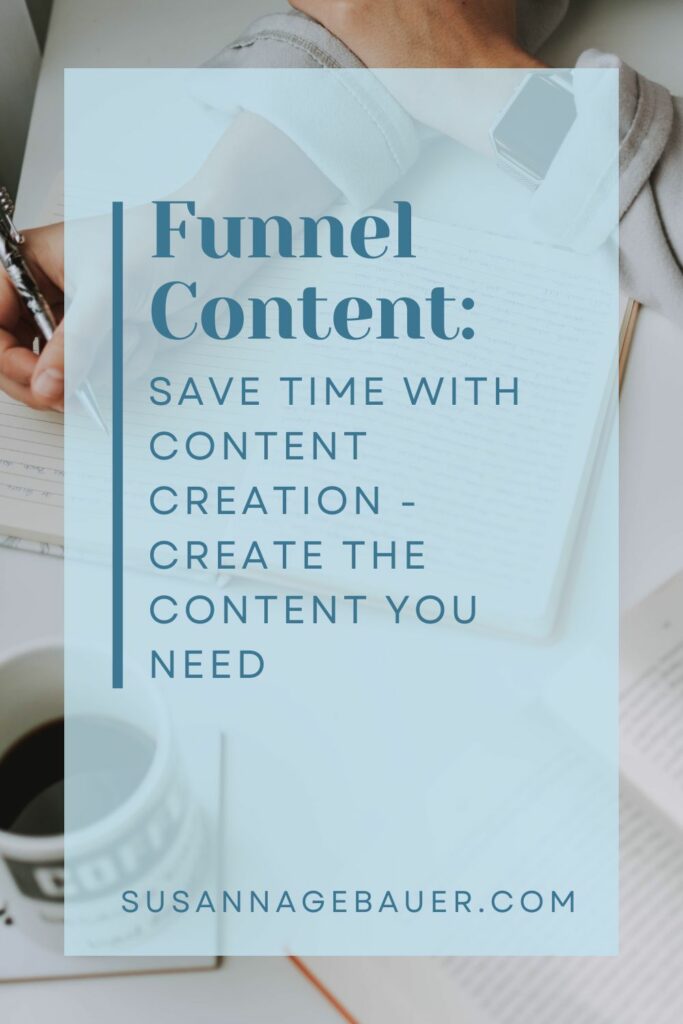
But in reality, you are not Apple, a Kardashian, or Justin Bieber, and your product description will not get thousands of shares on social media and numerous high-tier backlinks and get tons of traffic just because you are famous.
We “normal” people need to grow at each stage of the sales funnel. In my case this means, I need to focus on traffic generation for my blog, convert website visitors into email subscribers, nurture email subscribers to trust me and believe that I know what I am talking about. I have to convince my audience that they want to learn from me and finally I have to tell stories about my course to turn some of you (my blog readers) into paying customers.
I had to learn to create content for each stage of my sales funnel. Not every piece of content I ever created worked as I hoped for.
But the chance of achieving content goals increases for content that has a clear purpose that was already considered in the content creation process.
If each piece of your content achieves more, in turn, that often means you need less content for the same outcome.
You should not only have a goal for your content marketing strategy, you should also have a goal in mind for each piece of content that you create.
Don’t blindly create more and more content without a clear plan of why you are doing it. Content creation is too much work to waste on content that never achieves anything.
How about you: Do you consider the stage of the marketing or sales funnel when you create content? Have you ever thought about the sales funnel in your content creation?
Do you need help with your content marketing and blogging? Join me for a 4-day email course and learn the basics of content marketing:

